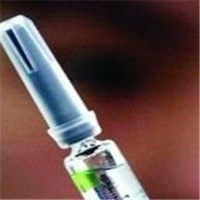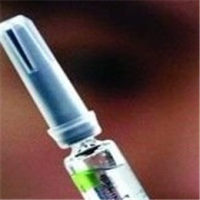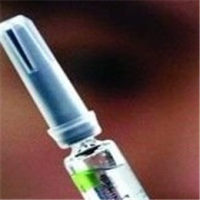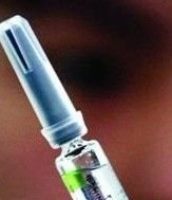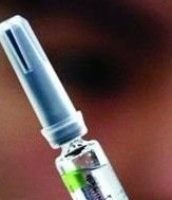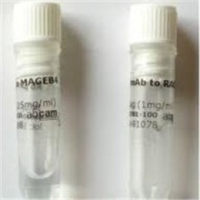
产品详情
文献和实验
相关推荐
供应商 :上海西格
库存 :48
靶点 :详见说明书
级别 :详见说明书
目录编号 :详见说明书
克隆性 :多克隆
抗原来源 :Rabbit
保质期 :详见说明书
抗体英文名 :Anti-KAT13A/SRC1
抗体名 :类固醇受体激活蛋白1抗体
标记物 :详见说明书
宿主 :详见说明书
适应物种 :详见说明书
免疫原 :KLH conjugated synthetic peptide derived from human KAT13A
亚型 :IgG
形态 :详见说明书
应用范围 :WB=1:100-500 ELISA=1:500-1000 IP=1:20-100 IHC-P=1:100-500 IHC-F=1:100-500 IF=1:100-500
浓度 :1mg/1ml
保存条件 :详见说明书
规格 :0.1ml/100μg 0.2ml/200μg
英文名称 Anti-KAT13A/SRC1中文名称 类固醇受体激活蛋白1抗体
别 名 ASV; bHLHe74; c SRC; Class E basic helix-loop-helix protein 74; F SRC 1; Hin 2 protein; Hin2 protein; MGC129719; MGC129720; mNRC 1; NCoA 1; NCoA-1; Ncoa1; NCOA1_HUMAN; Nuclear receptor coactivator 1; Nuclear receptor coactivator protein 1; NY REN 52 antigen; NY REN 52 antigen; p60 Src; pp60c src; Protein Hin 2; Protein Hin 2; Protein Hin-2; Protein Hin2; Proto oncogene tyrosine protein kinase Src; Renal carcinoma antigen NY REN 52; Renal carcinoma antigen NY-REN-52; RIP 160; RIP160; SRC 1; SRC-1; Steroid receptor coactivator 1; v src avian sarcoma (Schmidt Ruppin A 2) viral oncogene homolog.
浓 度 1mg/1ml
规 格 0.2ml/200μg
抗体来源 Rabbit
克隆类型 polyclonal
交叉反应 Human, Mouse, Rat, Chicken, Dog, Pig, Cow, Rabbit
产品类型 一抗
研究领域 肿瘤 细胞生物 免疫学 染色质和核信号 信号转导 转录调节因子 新陈代谢 表观遗传学
蛋白分子量 predicted molecular weight: 59kDa
性 状 Lyophilized or Liquid
免 疫 原 KLH conjugated synthetic peptide derived from human KAT13A
亚 型 IgG
纯化方法 affinity purified by Protein A
储 存 液 0.01M PBS, pH 7.4 with 10 mg/ml BSA and 0.1% Sodium azide
产品应用 WB=1:100-500 ELISA=1:500-1000 IP=1:20-100 IHC-P=1:100-500 IHC-F=1:100-500 IF=1:100-500
(石蜡切片需做抗原修复)
not yet tested in other applications.
optimal dilutions/concentrations should be determined by the end user.
保存条件 Store at -20 °C for one year. Avoid repeated freeze/thaw cycles. The lyophilized antibody is stable at room temperature for at least one month and for greater than a year when kept at -20°C. When reconstituted in sterile pH 7.4 0.01M PBS or diluent of antibody the antibody is stable for at least two weeks at 2-4 °C.
Important Note This product as supplied is intended for research use only, not for use in human, therapeutic or diagnostic applications.
产品介绍 Nuclear receptor coactivator that directly binds nuclear receptors and stimulates the transcriptional activities in a hormone-dependent fashion. Involved in the coactivation of different nuclear receptors, such as for steroids (PGR, GR and ER), retinoids (RXRs), thyroid hormone (TRs) and prostanoids (PPARs). Also involved in coactivation mediated by STAT3, STAT5A, STAT5B and STAT6 transcription factors. Displays histone acetyltransferase activity toward H3 and H4; the relevance of such activity remains however unclear. Plays a central role in creating multisubunit coactivator complexes that act via remodeling of chromatin, and possibly acts by participating in both chromatin remodeling and recruitment of general transcription factors. Required with NCOA2 to control energy balance between white and brown adipose tissues. Required for mediating steroid hormone response. Isoform 2 has a higher thyroid hormone-dependent transactivation activity than isoform 1 and isoform 3.
Function : Non-receptor protein tyrosine kinase which is activated following engagement of many different classes of cellular receptors including immune response receptors, integrins and other adhesion receptors, receptor protein tyrosine kinases, G protein-coupled receptors as well as cytokine receptors. Participates in signaling pathways that control a diverse spectrum of biological activities including gene transcription, immune response, cell adhesion, cell cycle progression, apoptosis, migration, and transformation. Due to functional redundancy between members of the SRC kinase family, identification of the specific role of each SRC kinase is very difficult. SRC appears to be one of the primary kinases activated following engagement of receptors and plays a role in the activation of other protein tyrosine kinase (PTK) families. Receptor clustering or dimerization leads to recruitment of SRC to the receptor complexes where it phosphorylates the tyrosine residues within the receptor cytoplasmic domains. Plays an important role in the regulation of cytoskeletal organization through phosphorylation of specific substrates such as AFAP1. Phosphorylation of AFAP1 allows the SRC SH2 domain to bind AFAP1 and to localize to actin filaments. Cytoskeletal reorganization is also controlled through the phosphorylation of cortactin (CTTN). When cells adhere via focal adhesions to the extra-cellular matrix, signals are transmitted by integrins into the cell resulting in tyrosine phosphorylation of a number of focal adhesion proteins, including PTK2/FAK1 and paxillin (PXN). In addition to phosphorylating focal adhesion proteins, SRC is also active at the sites of cell-cell contact adherens junctions and phosphorylates substrates such as beta-catenin (CTNNB1), delta-catenin (CTNND1), and plakoglobin (JUP). Another type of cell-cell junction, the gap junction, is also a target for SRC, which phosphorylates connexin-43 (GJA1). SRC is implicated in regulation of pre-mRNA-processing and phosphorylates RNA-binding proteins such as KHDRBS1. Also plays a role in PDGF-mediated tyrosine phosphorylation of both STAT1 and STAT3, leading to increased DNA binding activity of these transcription factors. Involved in the RAS pathway through phosphorylation of RASA1 and RASGRF1. Plays a role in EGF-mediated calcium-activated chloride channel activation. Required for epidermal growth factor receptor (EGFR) internalization through phosphorylation of clathrin heavy chain (CLTC and CLTCL1) at 'Tyr-1477'. Involved in beta-arrestin (ARRB1 and ARRB2) desensitization through phosphorylation and activation of ADRBK1, leading to beta-arrestin phosphorylation and internalization. Has a critical role in the stimulation of the CDK20/MAPK3 mitogen-activated protein kinase cascade by epidermal growth factor. Might be involved not only in mediating the transduction of mitogenic signals at the level of the plasma membrane but also in controlling progression through the cell cycle via interaction with regulatory proteins in the nucleus. Plays an important role in osteoclastic bone resorption in conjunction with PTK2B/PYK2. Both the formation of a SRC-PTK2B/PYK2 complex and SRC kinase activity are necessary for this function. Recruited to activated integrins by PTK2B/PYK2, thereby phosphorylating CBL, which in turn induces the activation and recruitment of phosphatidylinositol 3-kinase to the cell membrane in a signaling pathway that is critical for osteoclast function. Promotes energy production in osteoclasts by activating mitochondrial cytochrome C oxidase. Phosphorylates DDR2 on tyrosine residues, thereby promoting its subsequent autophosphorylation. Phosphorylates RUNX3 and COX2 on tyrosine residues, TNK2 on 'Tyr-284' and CBL on 'Tyr-731'. Enhances DDX58/RIG-I-elicited antiviral signaling. Phosphorylates PDPK1 at 'Tyr-9', 'Tyr-373' and 'Tyr-376'.
Subunit : Interacts with DDEF1/ASAP1; via the SH3 domain. Interacts with CCPG1. Identified in a complex containing FGFR4, NCAM1, CDH2, PLCG1, FRS2, SRC, SHC1, GAP43 and CTTN (By similarity). Interacts with ERBB2, STAT1 and PNN (By similarity). Interacts with CDCP1, PELP1, TGFB1I1 and TOM1L2. Interacts with the cytoplasmic domain of MUC1, phosphorylates it and increases binding of MUC1 with beta-catenin. Interacts with RALGPS1; via the SH3 domain. Interacts with HEV ORF3 protein; via the SH3 domain. Interacts with CAV2 (tyrosine phosphorylated form). Interacts (via the SH3 domain and the protein kinase domain) with ARRB1; the interaction is independent of the phosphorylation state of SRC C-terminus. Interacts with ARRB1 and ARRB2. Interacts with SRCIN1. Interacts with NDFIP2 and more weakly with NDFIP1. Interacts with PIK3CA and/or PIK3C2B, PTK2/FAK1 and ESR1 (dimethylated on arginine). Interacts with FASLG. Interacts (via SH2 domain) with the 'Tyr-402' phosphorylated form of PTK2B/PYK2. Interacts (via SH2 domain) with FLT3 (tyrosine phosphorylated). Interacts with PDGFRA (tyrosine phosphorylated). Interacts with CSF1R (By similarity). Interacts (via SH2 and SH3 domain) with TNK2. Interacts (via protein kinase domin) with the tyrosine phosphorylated form of RUNX3 (via runt domain). Interacts with TRAF3 (via RING-type zinc finger domain). Interacts with DDX58, MAVS and TBK1. Interacts (via SH2 domain) with GNB2L1/RACK1; the interaction is enhanced by tyrosine phosphorylation of GNB2L1 and inhibits SRC activity. Interacts with EPHB1; activates the MAPK/ERK cascade to regulate cell migration. Interacts with FCAMR. Interacts (via SH2 domain) with the 'Tyr-9' phosphorylated form of PDPK1.
Subcellular Location : Cell membrane. Mitochondrion inner membrane. Nucleus. Cytoplasm, cytoskeleton. Note=Localizes to focal adhesion sites following integrin engagement. Localization to focal adhesion sites requires myristoylation and the SH3 domain.
Tissue Specificity : Expressed ubiquitously. Platelets, neurons and osteoclasts express 5-fold to 200-fold higher levels than most other tissues.
Post-translational modifications : Myristoylated at Gly-2, and this is essential for targeting to membranes.
Dephosphorylated at Tyr-530 by PTPRJ (By similarity). Phosphorylated on Tyr-530 by c-Src kinase (CSK). The phosphorylated form is termed pp60c-src. Dephosphorylated by PTPRJ at Tyr-419. Normally maintained in an inactive conformation with the SH2 domain engaged with Tyr-530, the SH3 domain engaged with the SH2-kinase linker, and Tyr-419 dephosphorylated. Dephosphorylation of Tyr-530 as a result of protein tyrosine phosphatase (PTP) action disrupts the intramolecular interaction between the SH2 domain and Tyr-530, Tyr-419 can then become autophosphorylated, resulting in SRC activation. Phosphorylation of Tyr-530 by CSK allows this interaction to reform, resulting in SRC inactivation. CDK5-mediated phosphorylation at Ser-75 targets SRC to ubiquitin-dependent degradation and thus leads to cytoskeletal reorganization. Phosphorylated by PTK2/FAK1; this enhances kinase activity. Phosphorylated by PTK2B/PYK2; this enhances kinase activity.
S-nitrosylation is important for activation of its kinase activity (By similarity).
Ubiquitinated in response to CDK5-mediated phosphorylation.
公司专业供应的抗体,抗体是用于化学反应、分析化验、研究实验、教学实验、化学配方使用的纯净化学品,产品品质卓越,价格实惠,多种规格供应,售后完善。
| 产品名称 | 英文名称 | 货号 |
| Anti-KAT13A/SRC1抗体 | Anti-KAT13A/SRC1 | XGK2545 |
第二抗体是能和抗体结合的,即抗体的抗体。主要用于检测抗体的存在。
一抗是针对抗原的抗体,二抗是针对一抗的抗体。即抗体也可以充当抗原刺激机体产生抗体。也就是说,抗原进入机体刺激机体免疫系统产生免疫应答,由B细胞可以产生与相应抗原发生特异性结合的特殊蛋白质。
一抗二抗都是一种可以特异结合别的物质的基团,而且一抗可以至少结合两种其他基团(底物和二抗)。
一抗:可以特异结合底物,就是识别出我们想要检测的东西。一抗和底物结合与否用肉眼是看不出来的。
二抗:可以和一抗结合,并带有可以被检测出的标记(如带荧光、放射性、化学发光或显色基团),作用是检测一抗。 如果一抗自己带有可以被检测出的标记(如带荧光、放射性、化学发光或显色基团),则不需要二抗。但这样成本很高,因为一种一抗只识别一种底物。所以如今的设计一般是二抗带上可检测标记,再来检测一抗。而一抗识别底物。这样,当一抗结合到底物上,就可以通过二抗检测出来。

抗体的制备过程:
1. 免疫原的制备
普通的大分子蛋白,通过分子克隆构建载体并在大肠杆菌中进行诱导表达获得重组蛋白,纯化鉴定后可直接作为免疫原。
小分子蛋白或化合物等分子量小,需要偶联载体对该分子进行改造才能使其成为具有免疫原性的抗原,常见偶联载体如BSA、OVA、HAS等。
2. 免疫动物
常用于制备抗血清的动物有豚鼠、家兔、鸡、大小鼠等,大量时需要用到狗、绵羊、山羊等。
3. 免疫血清的收集
一般家兔、绵羊、山羊可采用静动脉采血,家兔、豚鼠、大鼠、鸡可采用心脏采血,家兔、山羊、绵羊可采用静脉采血。
4. 免疫血清的纯化与鉴定
得到的抗血清需要进一步的纯化,利用偶联了抗原的亲和柱进行层析,具有高效,特异性强,纯度高的特定。接着要鉴定纯化蛋白的含量、相对分子的质量、纯度以及特异性。
5. 免疫血清的保存
建议将Anti-KAT13A/SRC1抗体分装后进行保存。抗体一般比较稳定,在-80℃ ~-20 ℃可以保存约5年而不会影响效价,而真空干燥保存时间可以更久。保存前需经除菌并添加防腐剂。

下列是公司正在促销打折产品:
Skirrow琼脂28385250g用于空肠弯曲菌的选择分离培养(GB、ISO),每基础培养基需添加2支配套试剂。(SR0330)
2201 MelM 黑色素细胞培养基 500 ml incubation media 2201 MelM 黑色素细胞培养基 500 ml
爪哇根霉 支/瓶
BileEsculinAgar
Cary-BlairTransportMedium
改良Camp-BAP氏琼脂添加剂A添加于HB0243中
半固体琼脂 Semi-solid agar 生化培养基,用于细菌的动力实验
卵0脂吐温80营养琼脂 Lecithin Tween 80 Nutrient Agar 250 用于化妆品细菌总数测定(GB标准)
mCPC琼脂基础(CC琼脂基础)250g/瓶用于创伤弧菌的选择性分离。每90ml培养基中添加2支205420542和incubationmediamCPC琼脂基础(CC琼脂基础)250g/瓶用于创伤弧菌的选择性分离。每90ml培养基中添加2支205420542和1201
SBGEnrichmentBroth
AntibioticAgarNo.7
R2A 琼脂 250(g) incubation media R2A 琼脂 250(g)
赖氨酸吲哚动力培养基 LIM Medium 250克 用于链球菌的分离培养;细菌的赖氨酸、吲哚和动力复合生化试验
改良Camp-BAP氏琼脂基础250用于弯曲杆菌选择性分离培养(GB标准)incubationmedia改良Camp-BAP氏琼脂基础250用于弯曲杆菌选择性分离培养(GB标准)
TrypticSoyAgar
4metxYLUMBELLIFERYLPHOSPHATE4甲基伞花基嶙酸钠三水 (MUP)超级白色至灰白色粉末FROZENsigma
(福林酚)
5%度葡萄糖肉汤培养基shēng huà shì jì容量:100毫升
氧化石竹 ≥99.0% CcRYOPHYLLqNq OXIDq 06
吲哚乙酸 3Indoleacetic acid (≥98%, cell cultu... 8 5G 核酸衍生物
Anti-KAT13A/SRC1抗体双[三(羟甲基)基]5毫克
三丁基轻化锡;轻化三丁基锡 Tributyltinhydridq 83
2,5Dimetxylpxenylhydrezine xy7nochloride 51
2羟基2 2Hydroxy2methylpropiophenone,97% 9 25ML 通用试剂
苹果酸脱氢酶测试盒(测血清) 紫外比色法 50管 国产
抗体的生物素化标记实验要点:
1.如在反应混合液中有或游离氨基存在,会抑制标记反应。因此,蛋白质在反应前要对 0.1mol/L碳酸氢钠缓冲液或0.5mol/L硼酸缓冲液充分透析;
2.所用的NHSB及待生物素化蛋白质之间的分子比按蛋白质表面的ε-氨基的密度会有所不同,选择不当则影响标记的效率,应先用几个不同的分子比来筛选最适条件;
3.用NHSB量过量也是不利的,抗原的结合位点可能因此被封闭,导致抗体失活;
4.由于抗体的氨基不易接近可能造成生物素化不足,此时可加入去污剂如 Triton x-100, Tween20等;
5.当游离ε-氨基(赖氨酸残基的氨基)存在于抗体的抗原结合位点时,或位于酶的催化位点时,生物素化会降低或损伤抗体蛋白的结合力或活性;
6.生物素还可能与不同的功能基团,如羰基、氨基、巯基、异咪唑基及苯酚基,也可与糖基共价结合;
7.交联反应后,应充分透析,否则,残余的生物素会对生物素化抗体与亲和素的结合产生竞争作用;
8.在细胞的荧光标记实验中,中和亲和素的本底低,但由于链霉亲和素含有少量正电荷,故对某些细胞可导致高本底。

上海西格生物科技有限公司
实名认证
钻石会员
入驻年限:5年


